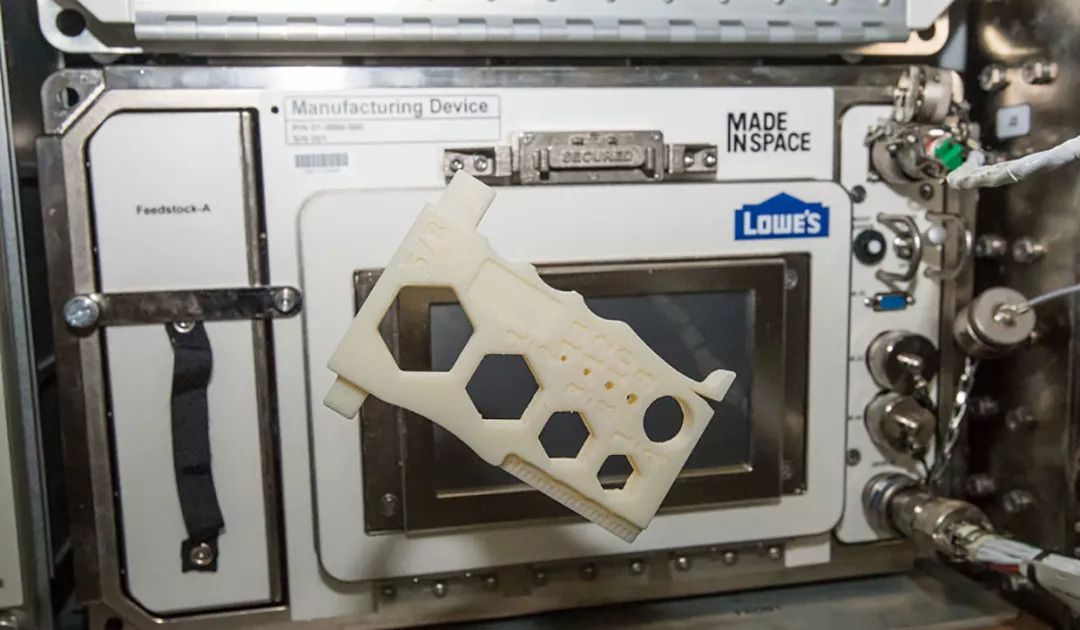Many scenes in science fiction stories have become reality! Therefore, we have reason to believe that bio-printers will be used in space in the future.
For example, if an astronaut may be severely burned by chemicals during a long voyage to Mars, he will be pleased that there is a device on the spacecraft that can print a new piece of skin. Or, looking further into the future, a Martian colonist may suffer from liver failure, and if the doctor can print out a replacement organ, then he can be treated.

Judging from the development status of human aerospace capabilities and 3D bioprinting technology (a fast-developing technology, 3D bioprinters can extrude biological materials and cells, and push layer by layer to build biological tissues), these scenarios are still far away. .
However, the bioprinter company Allevi and MadeinSpace, which has two 3D printers on the International Space Station (ISS), have established a new partnership, which is the first step towards the medical scenes in the science fiction story.
Allevi designed the ZeroG bio-extruder, which can print biomaterials under microgravity conditions. To ensure that it can be easily inserted into the MadeinSpace printer, the two companies are already working together. "We want it to be plug and play for astronauts," said Ricky Solorzano, CEO of Allevi (formerly BioBots).
ZeroG is still just a concept product, but the two companies seem to be confident that they can send the extruder to the International Space Station in the near future. Solorzano said: "We have a wealth of experience in biological materials, and they know how to send objects to space."

Photo Credit: MadeinSpace
Allevi's bioprinting extruder is placed in the MadeinSpace printer shown here.
MadeinSpace sent a 3D space printer to the International Space Station for the first time in 2014 and added one in 2016. 3D printing in space requires careful control of the extrusion process, because you don’t want material droplets to float around; you also need to control the working temperature of the machine, because the microgravity environment lacks what we are used to on earth Convection, so "it is difficult to keep the hot part hot and cold part cold," explained Andrew Rush, President and CEO of MadeinSpace.
In order to print biomaterials like hydrogels (a biocompatible material commonly used as cell "scaffolds"), Allevi’s ZeroG extruder has a piston (on the left) that drives the syringe (on the right) side). In order to construct objects of the desired geometry, the key is to control the extrusion of the material. These materials will be bonded together immediately, with each layer bonded to the previous layer.
Bioprinting on earth is progressing well! Many researchers have successfully printed human skin, although their technology has not yet been clinically applied. But printing organs is a much more difficult task, because organs are made up of many kinds of cells and are intertwined with blood vessels and nerves. Companies like Organovo are working hard to meet this challenge. Perhaps this technology will be ready when Mars colonization becomes a reality.
Once the ZeroG extruder can be integrated with the printer on the ISS, it will also have several immediate applications. Solorzano said that Allevi has distributed more than 200 printers to laboratories around the world, and he hopes that these users can propose scientific experiments: they can conduct experiments on the ISS and on Earth at the same time and compare the results of the experiments.
There are many interesting scientific questions about the performance of biological materials in space. For example, Solorzano said that researchers might study how bones are formed and how to deal with insufficient gravity, which is an important issue for astronauts who want to spend longer in space.
Another application is based on the concept of "Space-enabled manufacturing" promoted by MadeinSpace (that is, microgravity will enable the production of special types of materials and products that cannot be manufactured on earth and have practical value in space) On the basis of. MadeinSpace is already conducting fiber optic manufacturing trials on the International Space Station, and Merck Pharmaceuticals is also studying crystals that may be useful for drug release.
Will Allevi find that certain types of biological tissues grown in space are useful to people on Earth? Solorzano said: "This is a deeper question, but without basic biological experiments, we will not know the answer."
There are two ways to get the extruder into the International Space Station: Allevi can persuade NASA to bring it to NASA’s own experiments, or send it on request from researchers who can do research at the National Laboratory on the International Space Station. space station.
Either way, the ZeroG extruder must pass NASA's safety and verification inspections. "Everything sent to space has gone through this process," said Rush of MadeinSpace. The space agency needs to evaluate all materials and systems to ensure that they do not pose a threat to the health of astronauts or the operation of the International Space Station. Rush said: "NASA needs to know that if the device encounters something, it will fail in a safe way."
The biggest obstacle to bioprinting in space may be materials. It is relatively easy for Allevi to obtain permission to send biological materials such as hydrogels to the International Space Station, but it is much more difficult to obtain permission to send human cells filled with hydrogel scaffolds to the space station. Solorzano said: "We need to figure out what are the restrictions on the handling of cells on the International Space Station."
Rush said that there is another step before the equipment is allowed to be shipped to space, that is, the ZeroG extruder must stay on NASA's shaker for a period of time. "They must make sure that it can withstand the rocket lift-off test."
electronic accessories for Silicone
Electronic Accessories For Silicone,Silicone Keyboard,Silicone Keyboard Covers,Silicone Keyboard Protector
Nantong Boxin Electronic Technology Co., Ltd. , https://www.ntbosen.com